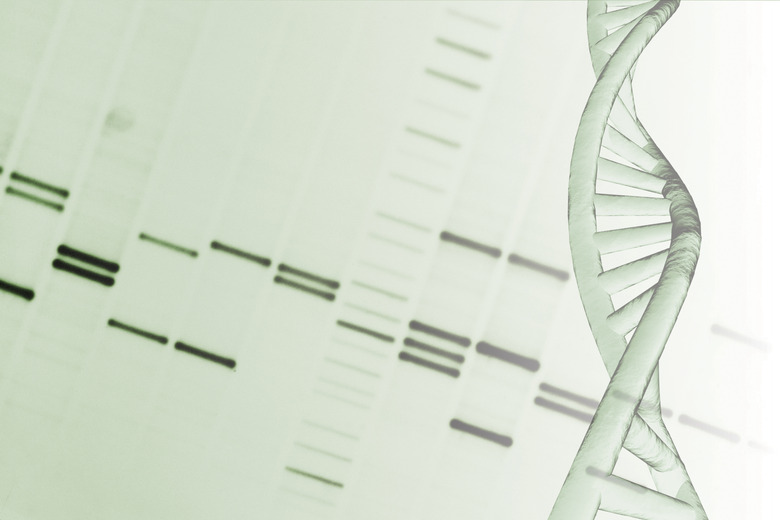Description Of Gene Splicing As A DNA Technique
Genes are sequences of DNA that can be broken into functional segments. They also produce a biologically active product, such as a structural protein, enzyme or nucleic acid. By piecing together segments of existing genes in a process called molecular cloning, scientists develop genes with new properties. Scientists perform gene splicing in the lab and insert the DNA into plants, animals or cell lines.
Why Splice Genes?
Why Splice Genes?
Although some night say it's prudent to leave nature alone, gene splicing offers many advantages for society. Scientists are by far its most frequent users, studying the function of genes and gene products. They add new genes to organisms to make crop plants disease resistant or more nutritious.
Gene therapy, an active topic of research, provides a new and customized way to fight genetic diseases. This approach is especially useful when small-molecule drugs do not exist. Scientists also use gene splicing to produce protein-based drugs that improve medical care.
Gene Splicing Process
Gene Splicing Process
A gene is spliced by assembling different gene segments and DNA sequences into a product called a chimera. Scientists join these snippets in a circular piece of DNA called a plasmid.
Scientists use a complex process to clone genes from an organism's DNA. However, in decades of scientific research, most genes already exist in a plasmid stored in a lab somewhere. Gene segments are cut out of the original DNA and joined to make a new gene. Then, researchers check the new sequence to make sure that its position and orientation in the DNA molecule are correct.
Coding Regions
Coding Regions
The coding region of the gene defines the product that is produced by the cell; this is almost always a protein. The coding region of a gene can be changed with naturally occurring or artificial mutations. These changes to a cell's DNA change how the cell functions. Scientists can add a tag sequence to track and study gene products in an organism. Gene splicing also creates new gene sequences to create proteins with multiple or entirely new functions.
Non-coding Regions
Non-coding Regions
Not all parts of a gene control production of an end product. Non-coding regions are equally important in determining gene function.
Promoter sequences control the ways that genes are expressed in a cell. These sequences determine whether a gene is always expressed, processes the cell produces a particular nutrient or whether a cell is under stress. The promoter also controls which cells a gene is expressed in. For example, a bacterial promoter will not work if it is moved into a plant or animal cell.
Enhancer sequences control whether the cell produces many or only a few units of the gene's end product. Other sequences determine how long and how many products linger in the cell and whether the cell excretes end products.
References
Cite This Article
MLA
Daniels, Chris. "Description Of Gene Splicing As A DNA Technique" sciencing.com, https://www.sciencing.com/description-gene-splicing-dna-technique-4718/. 3 August 2018.
APA
Daniels, Chris. (2018, August 3). Description Of Gene Splicing As A DNA Technique. sciencing.com. Retrieved from https://www.sciencing.com/description-gene-splicing-dna-technique-4718/
Chicago
Daniels, Chris. Description Of Gene Splicing As A DNA Technique last modified March 24, 2022. https://www.sciencing.com/description-gene-splicing-dna-technique-4718/
